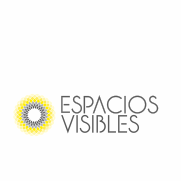AI-Generated Art Lacks Copyright Protection, D C. Court Says 1
Unfortunately, the recent emergence of generative AI into the popular consciousness has brought with it calls for onerous new copyright restrictions. For instance, some are advocating for new laws that would require developers of AI systems to get permission from and negotiate with countless rightsholders to get access to the material they need to teach their models how to be useful in the modern world. These proposals would both significantly expand the scope of the traditional copyright monopoly and create overwhelming practical impediments to effective AI development, thus undermining the foundational purpose of our copyright law, which is, ultimately, to “promote the progress of Science and useful Arts.” U.S. Const.
Generative AI has significantly altered the way we live, work and create in just a few months. As a result, the deluge of AI-generated text, images and music — and the process used to create them — has prompted a series of complicated legal questions. And they are challenging our understanding of ownership, fairness and the very nature of creativity itself. In September 2022, the US Copyright Office made history when they issued an unprecedented registration for a comic book named Zarya of the Dawn.1 The book was developed using text-to-image AI tool Midjourney (see Figure 1). The author declared that the artwork was AI-assisted rather than solely generated by the AI. In addition to AI generated images, she crafted and structured the story, designed each page’s layout and made artful decisions to arrange all of its components.
Generative AI and Copyright
But, if you fine-tune that model on 100 pictures by a specific artist and generate pictures that match their style, an unhappy artist would have a much stronger case against you. Applicants must disclose AI-generated content that is “more than de minimis” by including a brief description in the copyright registration application. The Board concluded that “Théâtre d’Opéra Spatial” contains an amount of AI-generated material that is more than de minimis and thus must be disclaimed because the Midjourney-generated image remains in substantial form in the final work and is not the product of human authorship. According to the Board, inputting commands to a generative AI system does not amount to human authorship because the traditional elements of authorship are determined and executed by AI, not the human user. Now, chances are global technology, pharma and financial services companies won’t be building AI “training sets” based on the work of fan fiction authors or comedians, so those artists can rest easy when it comes to corporate use of generative AI.
Copyright protects the way facts or ideas are expressed, but not the facts and ideas themselves. Leaving facts and ideas unprotected is a constitutional requirement under the First Amendment. The test for judges to apply to determine whether a use is fair is set forth in the Copyright Act. Friday’s ruling does not settle some of the broader questions determining the copyright protection qualification. In the latest ruling by Howell, copyright law “protects only works of human creation,” the judge wrote. For marketers who are increasingly investing in generative AI, especially for content creation purposes such as images for a campaign, this marks an example of what can and cannot be copyrighted under the law.
Technology in M&A Report: AI, Tech Adoption, and Talent Management in the US and Canada
“Intentionally using prompts that draw on copyrighted works to generate an output […] violates the terms of service of every major player,” he told The Verge over email. The company might have covered its back, but it could also be facilitating copyright-infringing uses. For AI researchers in the far-flung misty past (aka the 2010s), this wasn’t much of an issue. At the time, state-of-the-art models were only capable of generating blurry, fingernail-sized black-and-white images of faces. But in the year 2022, when a lone amateur can use software like Stable Diffusion to copy an artist’s style in a matter of hours or when companies are selling AI-generated prints and social media filters that are explicit knock-offs of living designers, questions of legality and ethics have become much more pressing.
One way to consider the copyright aspects of generative AI tools is to divide them into legal questions that deal with the input or training side vs. questions that deal with the output side. This post addresses this issue by placing it in the broader context of how EU copyright law tackles generative AI, examining how the proposed AI Act provisions interface with EU copyright law, and reflecting on its potential benefits and risks as regards transparency of data sets and moderation of AI generated content. Ariel Soiffer is a Partner at WilmerHale, where his practice focuses on technology-related transactions and advising clients on technology-related matters. Mr. Soiffer draws on his prior business experience as a management consultant to provide practical solutions to legal and business challenges that his clients face.
What is a Large Language Model?
Yakov Livshits
Founder of the DevEducation project
A prolific businessman and investor, and the founder of several large companies in Israel, the USA and the UAE, Yakov’s corporation comprises over 2,000 employees all over the world. He graduated from the University of Oxford in the UK and Technion in Israel, before moving on to study complex systems science at NECSI in the USA. Yakov has a Masters in Software Development.
Article 4 sets forth an exception for reproductions and extractions of lawfully accessed works/subject matter for the purposes of TDM. This is meant to add legal certainty for those acts that may not meet the conditions of the temporary and transient copy exception in Article 5(1) InfoSoc Directive. The new exception is subject to reservation by rights holders, including through “machine-readable means in the case of content made publicly available online”, for instance through the use of metadata and terms and conditions of a website or a service. Such reservation shall not affect the application of the TDM exception for scientific purposes in Article 3. This possibility of reservation is usually called the “opt-out” provision, and I’ll return to it below.
- GAI programs can generate new texts, images, and content (outputs) based on textual prompts by a user (inputs).
- He graduated from Bogazici University as a computer engineer and holds an MBA from Columbia Business School.
- Stability.AI, which developed Stable Diffusion, has announced that artists will be able to opt out of the next generation of the image generator.
- For example, generated software code could infringe the rights of others, as will be discussed below.
- The Office’s view is that «[i]f a work’s traditional elements of authorship were produced by a machine, the work lacks human authorship and the Office will not register it.» Id. at 16,192.
Generative AI, which uses data lakes and question snippets to recover patterns and relationships, is becoming more prevalent in creative industries. However, the legal implications of using generative AI are still unclear, particularly in relation to copyright infringement, ownership of AI-generated works, and unlicensed content in training data. Courts are currently trying to establish how intellectual property laws should be applied to generative AI, and several cases have already been filed.
Here Is A Practical Ultimate Guide to Managing Stress and Writing a Better Article People Want to Read.
The capabilities of text generators are perhaps even more striking, as they write essays, poems, and summaries, and are proving adept mimics of style and form (though they can take creative license with facts). Thaler has also applied for DABUS-generated patents in other countries including the United Kingdom, South Africa, Australia and Saudi Arabia with limited success. The Friday decision follows losses for Thaler on bids for U.S. patents covering inventions he said were created by DABUS, short for Device for the Autonomous Bootstrapping of Unified Sentience.
4 ways generative AI can stimulate the creator economy – ZDNet
4 ways generative AI can stimulate the creator economy.
Posted: Fri, 15 Sep 2023 00:00:00 GMT [source]
In general, copyright law gives the exclusive right to copy works, among other exclusive rights, to the applicable copyright holder. Any works produced from unauthorized copying constitute copyright infringement and should be considered derivative works (as defined by the Copyright Act). Copyright law, as interpreted by the US Supreme Court, does Yakov Livshits not permit anyone to copyright facts, ideas or styles of expression, but only the “expression” of ideas. Thus, a modification of a painting for reprint would be considered a derivative work, whereas a painting in the same style as another would not. Unlike patented inventions, there is no exclusive right to “use” a work protected by copyright.
The first and perhaps most contentious is whether fair use should permit use of copyrighted works as training data for generative AI models. The second is how to treat generative AI outputs that are substantially similar to existing copyrighted works used as inputs for training data—in other words, how to navigate claims that generative AI outputs infringe copyright in existing works. The third question is whether copyright protection should apply to new outputs created by generative AI systems. It is important to consider these questions separately, and avoid the temptation to collapse them into a single inquiry, as different copyright principles are involved. In our view, existing law and precedent give us good answers to all three questions, though we know those answers may be unpalatable to different segments of a variety of content industries. The answer to this question is likely to depend largely on the extent of a human author’s selection, arrangement and/or modification of the code .
Additionally, the copyright industries can work with AI firms and standard setting organizations such as the World Wide Web Consortium (W3C) to develop an exclusion protocol with more granularity that would permit search engine bots but exclude other bots. But, if you’re tempted to rely on AI for your content marketing strategy, think again. The future of generative AI and its legal battles is unclear, given that Yakov Livshits this is uncharted territory. Under federal guidelines, penalties could require OpenAI to destroy its current dataset in addition to fines of up to $150,000 for each breach. This double whammy—reconstructing a dataset with only approved content and potential financial ruin—would likely spell disaster for the company. Microsoft, which has invested in OpenAI, added ChatGPT to its Bing search engine in February.
wordpress theme by initheme.com

